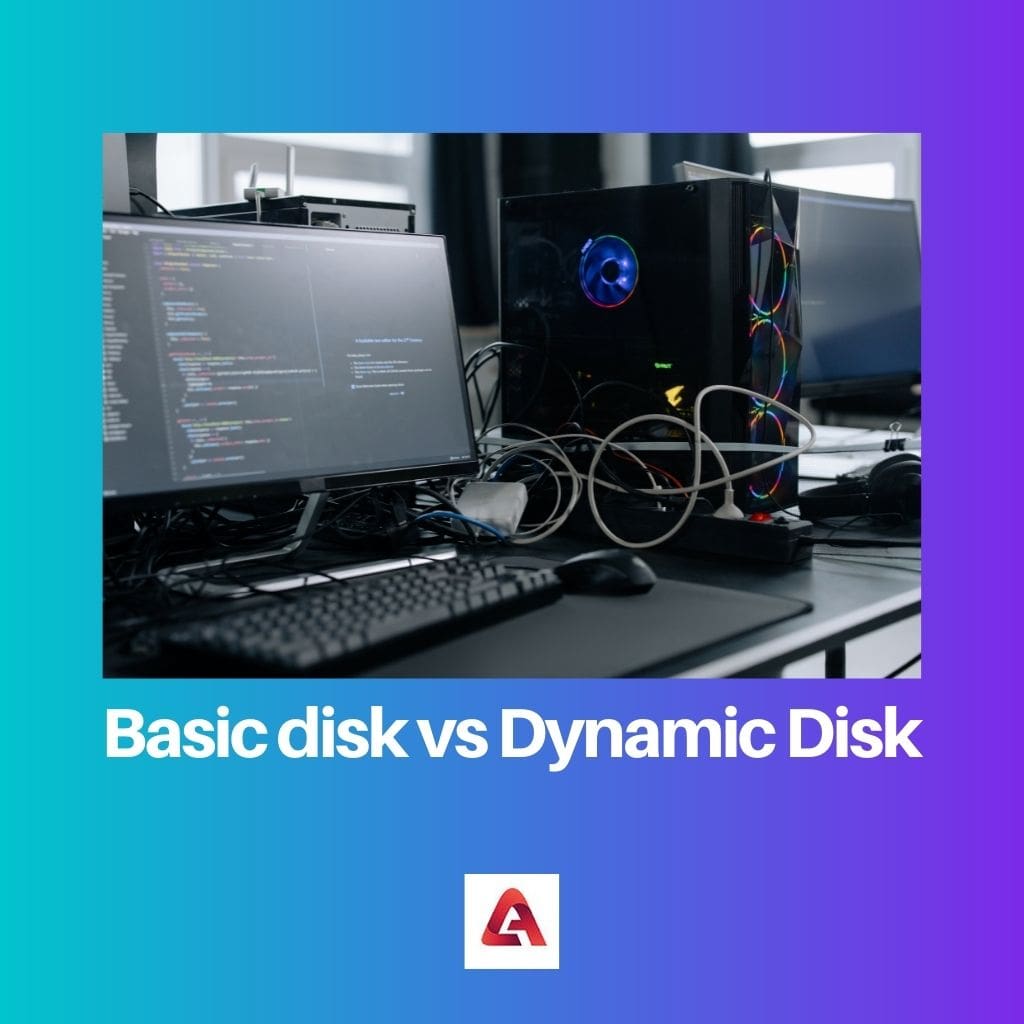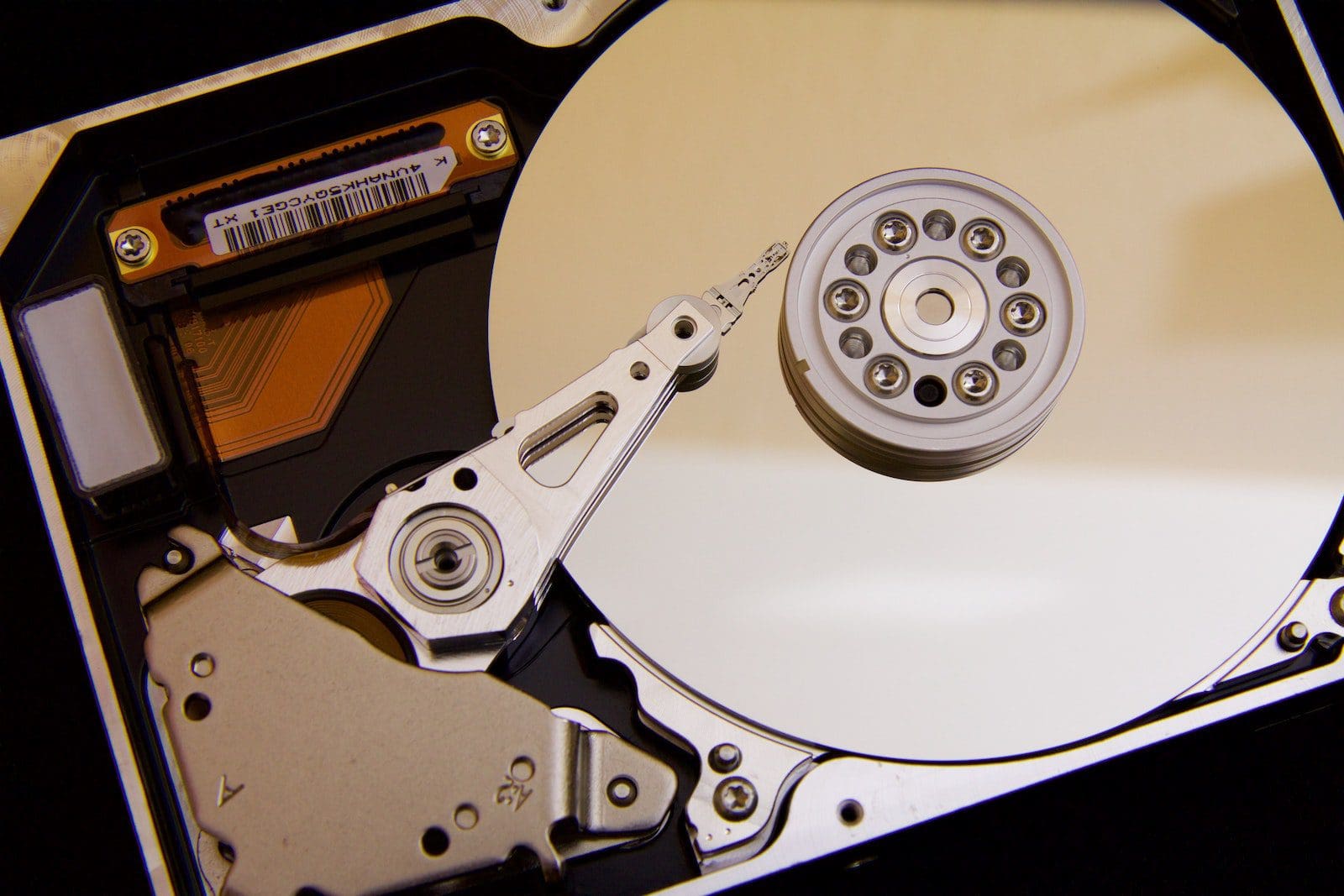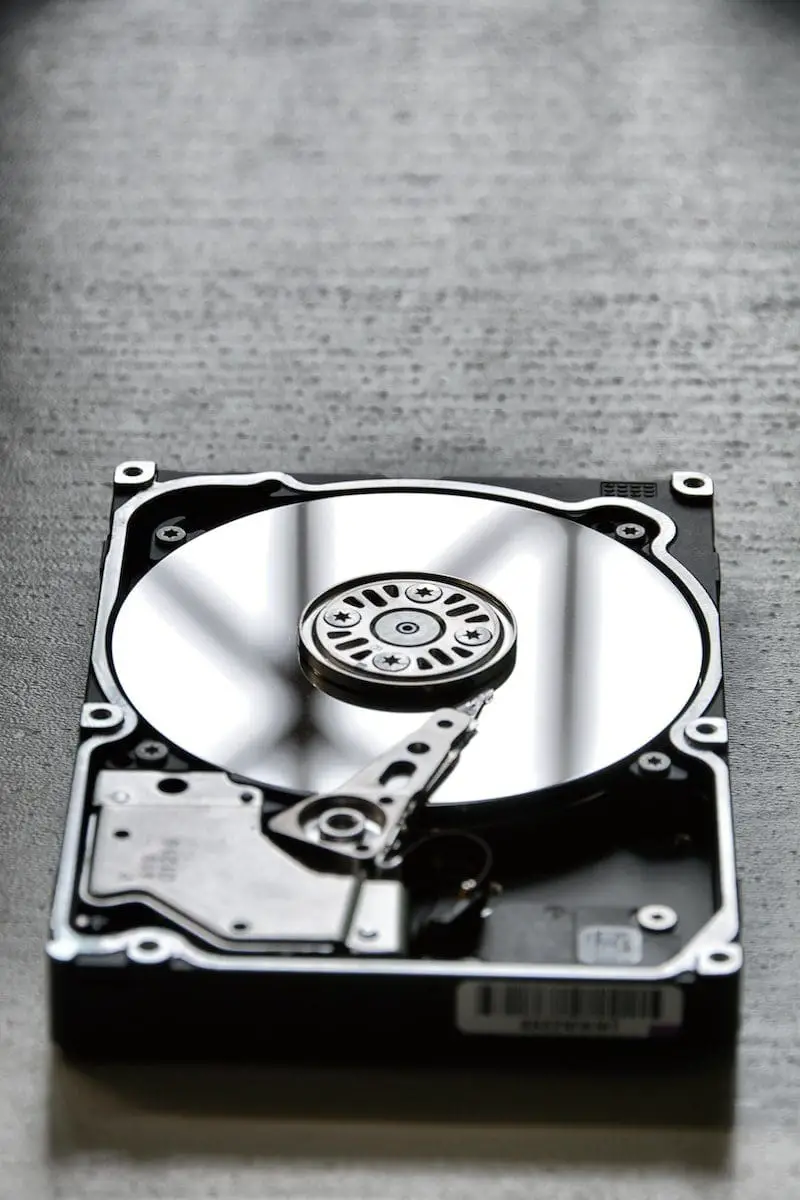Microsoft and its Windows operating system dominate the computer market. It was the first company that made personal computers available for most households and small businesses.
For this reason, personal computers have become the most common analytical device on this planet.
Along with the analytical process, the computer stores lots of information on its hard drive. Most hard disks use two types of configuration to store the data in them.
These configurations are primary disks and dynamic disks. Although both designs store data efficiently, they work on different principles and offer additional features.
Key Takeaways
- Basic disks are simple storage types supporting primary and extended partitions, suitable for most users.
- Dynamic disks offer advanced features, like fault tolerance and creating volumes spanning multiple disks.
- Converting from a basic disk to a dynamic disk is a one-way process; converting back requires data backup and disk reformatting.
Basic Disk vs. Dynamic Disk
The difference between Basic Disk and Dynamic Disk is that the primary disk is a traditional Windows-based hard disk data storage configuration that uses MBR and GPT partition where partition extension is impossible. In contrast, a dynamic disk is the latest data configuration format that uses LDM and VDS features where partition extension is possible.

Comparison Table
| Parameter of Comparison | Basic Disk | Dynamic Disk |
|---|---|---|
| What is it | Traditional data storage configuration on a hard disk uses the Master Boot Record (MBR) partition and GUID Partition Table (GPT) partition format. | The latest data storage configuration uses LDM (Logical Disk Manager), and VDS (Virtual Disk Service) features for data volume management. |
| Backward compatibility | Yes | No |
| Boot loaders Support | Yes | No |
| Mutual conversion | It is possible without any data loss. | Not possible with data loss. |
| Partition size extension | It cannot be extended | Can be extended |
What is Basic Disk?
A basic disk is a complex drive configuration with primary partitions and logical drives for data storage. Generally, the Windows operating system uses this type of hard disk configuration.
It is a straightforward data storage solution. The benefit of using such a system is that it offers a valuable array of altering data storage space solutions.
Another benefit of basic disks is that they can accommodate clustered and USB drives with the current system. The basic disks also support backward compatibility, and all Windows operating system versions support this hard disk configuration.
A hard disk with a basic disk configuration supports two types of partitions.
These are the Master Boot Record (MBR) and GUID Partition Table (GPT). On the one hand, the MBR partition uses the standard BIOS partition table for creating a hard disk layout. On the other hand, the GPT partition uses UEFI for the hard disk layout.
A primary disk uses bootloaders. For this reason, a hard disk with a basic disk configuration supports multi-boot configuration. It means the hard disk can be booted with multiple formats, which poses a severe data security threat.
Converting a primary disk to a dynamic disk is possible without data loss. This process is known as mutual conversion.

What is Dynamic Disk?
The primary feature of dynamic disks is the capability to create mirrored and RAID-5 volumes. This type of hard disk configuration offers fault-tolerant volume creation.
With the evolution of dynamic disks, it is now possible to create large data volumes that spread through multiple disks.
A user can have greater flexibility in data volume management with dynamic disk configuration. For data volume management solutions, dynamic disks use LDM (Logical Disk Manager) and VDS (Virtual Disk Service) features.
The maximum limitation of dynamic volumes on a system is up to 2000. However, using less than 32 dynamic volumes in a system is recommended.
The benefit of the dynamic disk is the ability to reactivate a missing or offline disk. It is also much easier to repair RAID-5 data volumes with dynamic disks.
A user can also break the mirrored data volume into two volumes on dynamic disks. Multi-partition data volume support is only available on dynamic disks.
The dynamic disk does not support bootloaders. For this reason, a hard disk configured with an active system cannot be switched between multiple operating systems. It provides extra security for stored data volume.
The mutual conversion feature is also not available on dynamic disk configuration. Therefore, it is required to delete all volumes on the dynamic disk before converting it to a primary disk.

Main Differences Between Basic Disk and Dynamic Disk
- A primary disk is a traditional hard disk data storage configuration that uses MBR and GPT partition format. On the other hand, the dynamic disk is the latest data configuration format that uses LDM and VDS features.
- Due to backward compatibility, the primary disk format supports every type of Windows-based operating system. However, the dynamic disk does not support backward compatibility and only works with a few Windows-based operating systems.
- Bootloader support is available on a primary disk. For this reason, switching between multiple operating systems on an immediate disk-configured hard drive is possible. On the other hand, the dynamic disk does not support bootloaders. Swapping between multiple operating systems with dynamic disk configuration is impossible.
- Through mutual conversion, primary disk to dynamic disk transfer without any data loss is possible. But, dynamic disk-to-direct disk transfer is impossible without a complete data delete process.
- With basic disk format, the partition size extension is impossible after creation. However, the partition size extension is possible with a dynamic disk.

- https://dl.acm.org/doi/pdf/10.1145/236387.236423
- https://ieeexplore.ieee.org/abstract/document/4022187/

The technical insight provided in this article gives a clear understanding of basic and dynamic disks, shedding light on the complexities of data storage.
Indeed, the article is a great read for those interested in the inner workings of computer systems.
The article’s thorough analysis of basic and dynamic disks makes it a valuable educational resource for those interested in computer hardware.
Absolutely, articles like this are instrumental in providing technical insights into complex computer concepts.
This article is a great reference for anyone wanting to delve into the specifics of disk configurations.
The breakdown of basic and dynamic disks is very thorough and well-explained in this article. It’s a great reference for understanding data storage concepts.
This article is a goldmine of information for anyone wanting to dive deeper into disk configurations.
I completely agree. The article makes the complex concepts easy to understand.
The level of detail in this article is impressive. The explanation of basic and dynamic disks is very informative. I appreciate how it’s laid out in a clear and concise manner.
I agree, the comparison table really helps visualize the differences between the two disk types.
This article is definitely a great resource for understanding the intricacies of basic and dynamic disks!
The article delivers a meticulous comparison of basic and dynamic disks. It’s a fantastic resource for understanding the complexities of computer storage.
Definitely, the article’s detailed insights are beneficial for anyone wanting to enhance their understanding of disk configurations.
The article provides a valuable insight into the technical configurations of basic and dynamic disks. It’s essential knowledge for anyone dealing with data storage.
Absolutely, well-written and detailed articles like this are beneficial for those working in the tech industry.
It’s fascinating to learn about the differences between basic and dynamic disks. Microsoft’s contribution to making computers accessible to most households and businesses is commendable.
Absolutely! Their impact on the computer market cannot be overstated.
The comparison table and detailed explanations in the article are enlightening. It’s a valuable piece for understanding the nuances of disk configurations.
This article is a must-read for anyone looking to deepen their knowledge of computer storage technologies.
I found the article to be an excellent resource for clarifying the differences between basic and dynamic disks.
I appreciate the in-depth analysis of basic and dynamic disks in this article. It’s incredibly informative and well-written.
Absolutely, it’s a comprehensive breakdown of the two disk types and their functions.
The article provides a comprehensive comparison of basic and dynamic disks, making it a valuable resource for anyone interested in learning about this topic.
Absolutely, it’s a great read for those looking to expand their knowledge in computer hardware.
This article simplifies a complex topic and is an excellent educational material for tech enthusiasts.